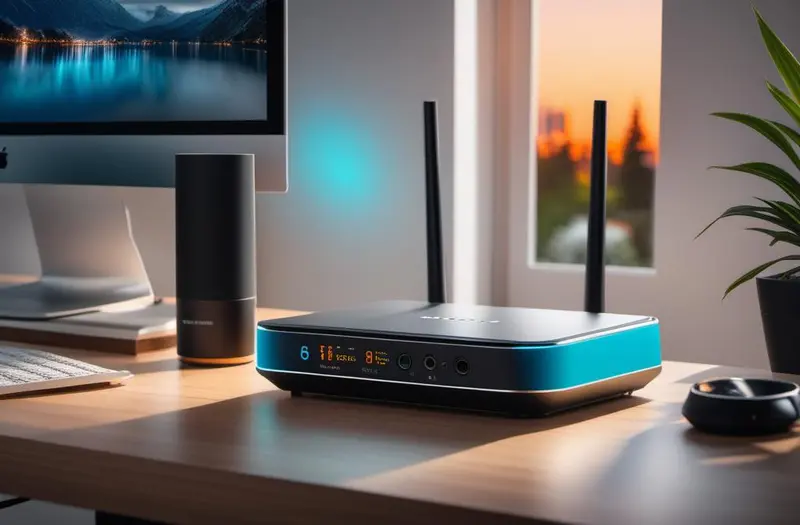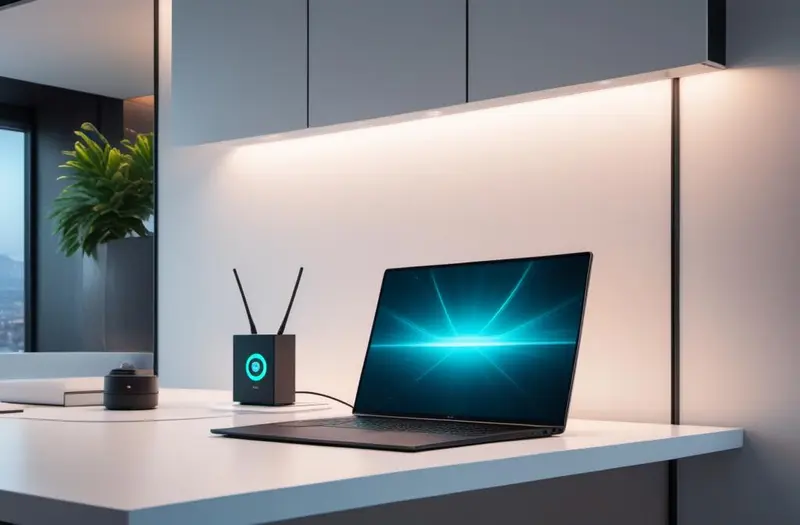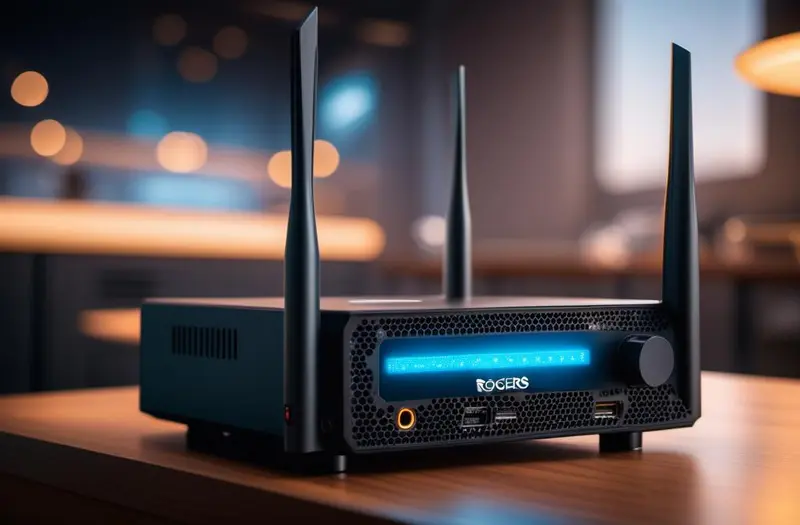Learn how to setup VPN on Rogers router for whole home security, better privacy, and enhanced streaming optimized in just 5 easy expert steps.
Table of Contents
ToggleWhy Set Up a VPN on a Rogers Router?
When we talk about VPN, most people picture apps on smartphones or desktops. But setting up a VPN directly on your router extends protection to every device using your network—without the need for separate installations.
This setup encrypts all traffic from smart TVs, gaming consoles, tablets, and even IoT devices. That means better privacy, enhanced security, and unrestricted access to global content, all managed from one central point.
With the rise in cyber threats and geo-restrictions, learning how to install VPN on Rogers modem is no longer optional for many—it’s a proactive security measure.
And when you consider Rogers’ wide coverage in the U.S., optimizing your setup can make a significant difference.
Step 1: Check Router Compatibility
Not every Rogers router supports VPN out of the box. First, we need to confirm whether your device allows VPN configurations.
- Log into your router’s web interface (usually via
192.168.0.1). - Locate the firmware version and model number.
- Compare it to the supported models list from your VPN provider.
If your router does not support VPN settings, you have two options:
- Flash it with custom firmware (like DD-WRT or Tomato).
- Purchase a VPN-compatible router (e.g., ASUS, Netgear, or TP-Link with OpenVPN support).
Tip: Flashing firmware can void your warranty, so proceed with caution and always back up current settings.
Step 2: Choose the Right VPN Provider
Your choice of VPN makes a major difference in both security and speed. Look for providers that specifically mention Rogers router VPN installation in their support documentation.
Key criteria to consider:
- OpenVPN or IKEv2/IPSec compatibility
- High-speed servers in multiple regions
- No-log policy
- Kill switch and DNS leak protection
- Detailed setup guides for routers
Here’s a comparison of top VPNs ideal for Rogers:
| VPN Provider | Router Compatibility | Avg. Speed (Mbps) | No-Log Policy | Customer Support |
|---|---|---|---|---|
| NordVPN | DD-WRT, OpenWRT, ASUS | 250 | Yes | 24/7 Chat |
| ExpressVPN | Pre-flashed + custom | 280 | Yes | Live Chat |
| Surfshark | Manual Config | 220 | Yes | Email & Chat |
Pro Tip: Go for providers offering dedicated IPs if you need stable remote access.
Step 3: Configure the VPN on Your Rogers Router

Once compatibility is confirmed and you’ve subscribed to a VPN, it’s time to set it up. Here’s a general process:
- Log into your router dashboard.
- Navigate to the VPN or WAN settings tab.
- Choose your VPN type (e.g., OpenVPN).
- Upload the
.ovpnconfiguration file provided by your VPN. - Enter your VPN username and password.
- Apply and save settings.
You’ll typically see a status update when the VPN is connected. For dynamic setups, enable automatic reconnection on failure.
Important: Always test your connection using tools like dnsleaktest.com to ensure data is routed through the VPN tunnel.
Read More : How to Connect VPN to Firestick from Phone
Step 4: Optimize VPN Performance
Using a VPN can slow down your internet slightly due to encryption. But with the right optimization, that impact can be minimized.
Here’s how we can enhance performance:
- Select VPN servers geographically close to you.
- Use high-speed protocols like WireGuard (if supported).
- Enable split tunneling for high-bandwidth activities like gaming.
Make sure your best VPN settings for Rogers include a fast, reliable DNS provider (e.g., Cloudflare or Google DNS).
Read More : How to Optimize VPN for Remote Work Efficiency
Step 5: Test and Secure the Network
With everything set up, it’s crucial to test and tighten security.
Checklist to follow:
- ✅ Run speed tests (before vs. after VPN)
- ✅ Use IP checker tools to confirm virtual location
- ✅ Enable firewall and port filtering in your router
- ✅ Schedule regular VPN connection resets
- ✅ Monitor logs for unusual activity
Rogers home network VPN configuration should balance performance with airtight security. Automation tools can also help ensure your VPN reconnects after power loss or service interruptions.
Benefits of VPN on Rogers Router
There are several compelling reasons to enable VPN on Rogers gateway. Among the most significant are:
- Whole-home protection: Shield every device from cyber threats.
- Bypass geo-restrictions: Access global content libraries from the U.S.
- Enhanced privacy: Hide your IP address from ISPs and data collectors.
A configured VPN transforms your Rogers setup from a simple gateway into a digital fortress.
Read More : How to Choose the Best VPN for Your Needs
Common Issues and How to Fix Them
Even with the right setup, issues may arise. Let’s tackle the most common ones.
1. Slow Speeds
- Try switching VPN servers.
- Use Ethernet instead of Wi-Fi.
- Lower the encryption level (AES-128 instead of AES-256).
2. Connection Drops
- Enable auto-reconnect and kill switch.
- Check firmware stability.
- Schedule periodic reboots via router scheduler.
3. Streaming Blocked
- Switch to a server optimized for streaming.
- Clear cache and cookies.
- Use Smart DNS in tandem with VPN.
Rogers router VPN troubleshooting is all about testing variables one at a time to isolate the issue.
Enhancing Parental Controls with VPN

VPNs not only protect but can also reinforce digital parenting.
Here’s how:
- Block access to adult sites using DNS filters.
- Monitor device-level access through VPN logs.
- Schedule internet downtime via the router.
This makes VPN client setup Rogers ideal for family households that prioritize safe browsing.
Managing Devices on a VPN Network
Too many devices connected to one VPN tunnel can slow performance.
To manage this:
- Limit the number of concurrent connections.
- Use VLANs to segregate guest traffic.
- Employ QoS (Quality of Service) for prioritizing critical devices.
Private network setup Rogers should always account for bandwidth allocation.
Staying Compliant with Rogers Policies
While VPN use is legal, some activities can breach ISP policies.
Tips to stay safe:
- Avoid torrenting copyrighted material.
- Choose U.S.-based VPN servers for consistent speed.
- Do not overload Rogers network infrastructure.
VPN encryption on Rogers is a protective measure, not a license to bypass laws or fair-use policies.
Maintaining Router Health After VPN Installation
Routers work harder with VPN encryption. Keep them in shape by:
- Cleaning vents to prevent overheating.
- Updating firmware monthly.
- Using external storage for logs (if enabled).
This prolongs the hardware’s lifespan and ensures your Rogers broadband VPN configuration remains efficient.
VPN for Remote Work on Rogers Network
VPNs have become essential for remote teams. On Rogers, they ensure:
- Secure file transfers
- Protected access to remote desktops
- Confidential video conferencing
Optimize Rogers networking VPN options by selecting business-grade VPNs with centralized management.
Future Trends in Router-Based VPNs
The future of VPN client setup Rogers lies in automation and AI:
- AI-powered VPN routing for speed optimization
- Smart threat detection and response
- Built-in VPN modules in new-gen Rogers routers
These innovations promise to simplify user control while enhancing protection.
FAQs
Can I install a VPN directly on my Rogers modem?
Only if it supports third-party firmware or comes with built-in VPN features. Otherwise, a secondary VPN-compatible router is needed.
Will using a VPN slow down my Rogers internet?
Slightly, due to encryption. But choosing the right server and settings can minimize the impact.
Do I need technical skills to configure a VPN on my router?
Basic network knowledge helps, but many providers offer easy-to-follow guides.
Is it legal to use a VPN with Rogers in the U.S.?
Yes, VPN use is legal in the U.S. for privacy and security purposes.
How do I troubleshoot if my VPN isn’t working on the router?
Check server settings, update firmware, and review DNS or IP configuration.
Conclusion
Setting up a VPN on a Rogers router might seem intimidating, but with the right steps and tools, it’s entirely achievable—even for non-techies. From boosting online privacy and securing all your devices to unlocking the full power of your Rogers network, the benefits are clear and immediate.
Whether you’re safeguarding a smart home, managing remote work, or simply want to enjoy global content without restrictions, learning how to setup VPN on Rogers router is a smart move for the modern digital age.
Ready to take your online privacy to the next level? Discover top VPN tools, tips, and comparisons at VPNPieces – your VPN guide hub.
Key Takeaways
- Setting up a VPN on a Rogers router protects all connected devices automatically.
- Choose a VPN that supports router configuration and offers strong privacy features.
- Optimize performance by selecting the right server and enabling split tunneling.
- Regular maintenance and monitoring ensure stability and top-tier security.
- VPN setup can enhance parental controls, streaming access, and work-from-home efficiency.
















